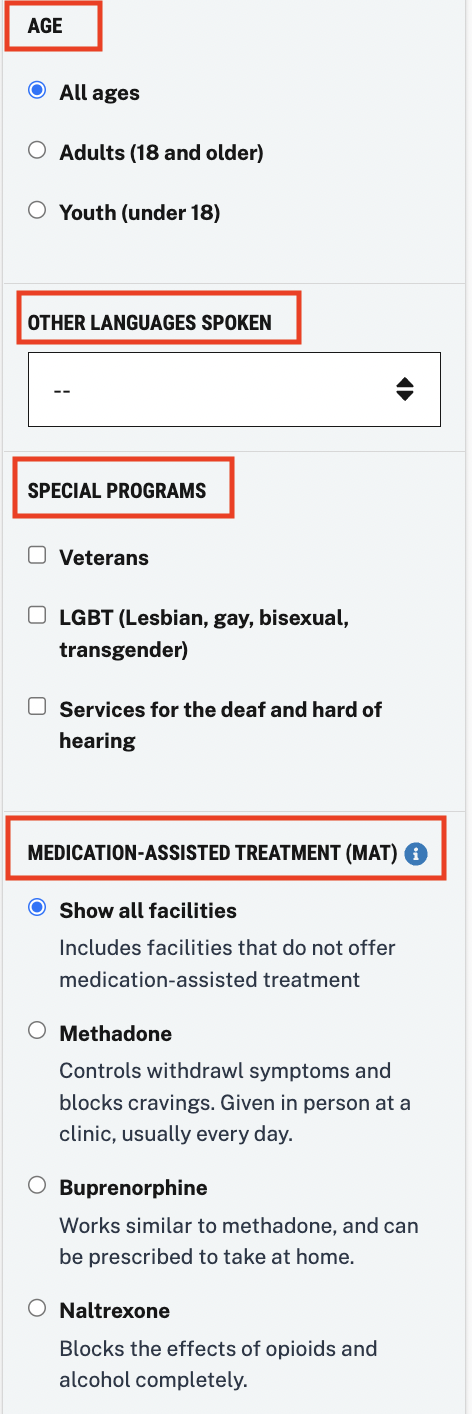This article was first published on December 22, 2022. It was last reviewed and updated on December 23, 2022.
If a person is physically dependent on a high dose of a substance like a benzodiazepine or opioid, close supervision is needed while the person slowly gets off the substance. In the United States, most commonly, the person is admitted to a “detoxification” or “detox” facility.
Start here
To find such a facility (also see the red boxes we have added to the screenshot image below):
– Go to findtreatment.gov
– Click on the “Search for treatment” tab at the top of the page.
Options for focusing/ limiting the search
See the image below, which shows the initial search options.
– Enter the patient’s location and the distance around it that you want to search for.
– Under “Treatment type“, choose “Detox”
– Under “Payment options“, choose what kind of payment options, e.g., which health insurance, are feasible for the patient.
(For more options that can further refine the search, please see the next section and the second image below.)
Other options for focusing/ limiting the search
Other options that can be used to further refine the search for a detox center are shown in the image below.
– Age
– Other languages spoken
– Special programs: Detox facilities that particularly serve veterans, persons who identify as LGBT, or those who are “deaf” or hard of hearing.
– Medication-assisted treatment (MAT): Whether searching only for facilities that provide medication-assisted treatment (MAT) using methadone, buprenorphine, or naltrexone.
Related Pages
Getting off a benzodiazepine: What should the rate of taper be?
How to find a certified addiction psychiatrist
How to find treatment facilities for substance use disorders (addiction)
How to find a detoxification (detox) center
How to choose a rehab
Private facilities for the treatment of substance use disorders
Copyright © 2022 to 2025, Simple and Practical Medical Education, LLC. All rights reserved. The content on this website may not be reproduced in any form without express written permission.
Disclaimer: The content on this website is provided as general education for medical professionals. It is not intended or recommended for patients or other laypersons or as a substitute for medical advice, diagnosis, or treatment. Patients must always consult a qualified healthcare professional regarding their diagnosis and treatment. Healthcare professionals should always check this website for the most recently updated information.



This is a great resource. One challenge with inpatient detox is that they are often mired in strict protocols which are often far to fast for long-term users of bzds. While you can prevent a seizure in a 4-7 day detox, the more lingering impact of the short-course-detoxes can be torture for patients (truly life-crushing debilitating sxs). Dr Heather Ashton has a long-course protocol which is one good option but the reference to her in this portion of the article regarding her recommending inpatient is likely based on a British model where they allow more time with inpatient admissions than typically available in USA. As an addiction psychiatrist, I have treated multiple patients after they have been tapered too quickly and it is a complex resolution to be sure.